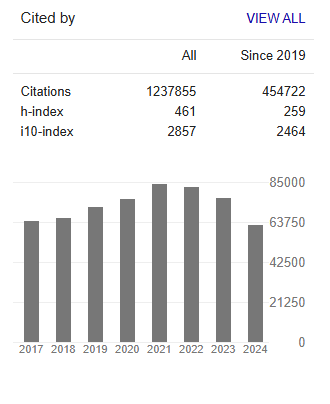Clinical Presentation and Associated Factors of Lower Limb Chronic Venous Insufficiency at a Tertiary Hospital in Uganda: A Cross-Sectional Study
Abstract
Elizabeth Komurembe, Wilberforce Kabweru, Robert Odongo, Peter Majeme and John Paul Magala
Background: Lower limb chronic venous insufficiency (CVI) is a common disorder associated with sequelae of changes that lead to varicose veins and skin trophic changes. There is limited data on potential associated factors from representative studies yet its burden and impact on the quality of life is quite significant. We evaluated the clinical presentation and associated factors of lower limb CVI among patients at Mulago National Referral Hospital (MNRH).
Methods: We conducted a cross-sectional study of 104 consecutive participants with CVI aged ≥ 18 years attending the outpatient clinics of MNRH. Limbs of participants with history of surgery pertaining to CVI were excluded. We recorded information on demographics, relevant medical history, symptoms, lifestyle and clinical presentation. We described CVI using the clinical and an- atomical components of the clinical-etiologic-anatomical and pathophysiologic (CEAP) scale. Data was analyzed at both bivariate and multivariate levels using Stata version 14.1
Results: Altogether, 104 participants were enrolled with a male: female ratio of 2:1, age range of 18 to 85 years and median age of 43 years. The commonest venous symptoms included; venous pain (96.2%), sensation of swelling (93.3%) and heaviness (79.8%). Of the 146 affected limbs, CEAP clinical class included; C0:59.6%, C1:40.4%, C2:80.8%, C3:88.5%, C4:73.1%, C5:30.8%, C6:51.9%. The anatomical class identified superficial veins in 138 (90.5%), deep veins in 46 (29.7%) and perforator veins in 122 (79.7%) affected limbs. Men had significantly higher proportions of skin trophic changes 88.7% vs 63.6% (p=0.003) while females had significantly higher proportions of venous symptoms compared to men 57.6% vs 32.4% (p=0.015). All participants with a smoking history had skin changes. Obese and overweight patients had higher proportions for venous symptoms 13 (54.2%) and 14(50%) respectively as compared to those who had a normal BMI 14(28.6%).
Conclusions: Most participants are symptomatic with advanced disease, young and predominantly male. Males had 4.5 times higher odds of having skin changes as compared to females. Although some associated factors such as age, gender are immutable, others can be modified, such as physical activity, cigarette smoking.




